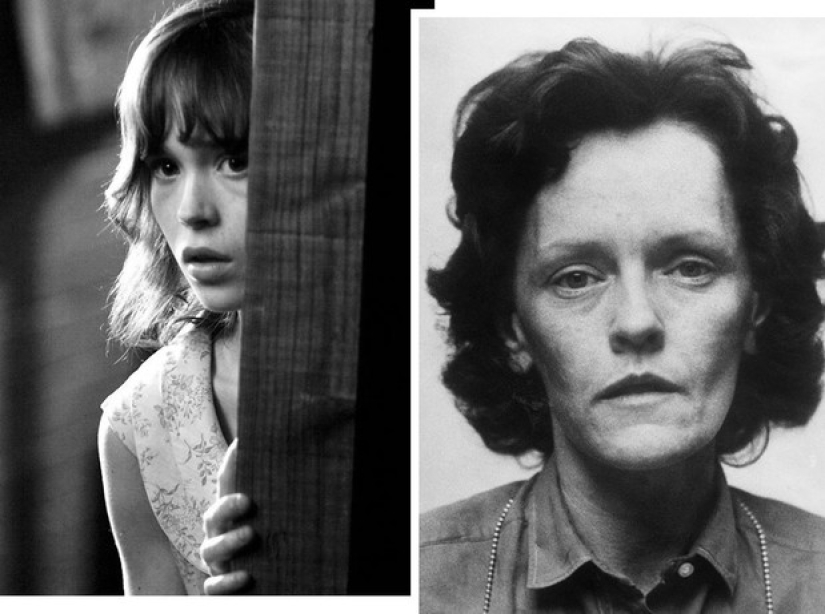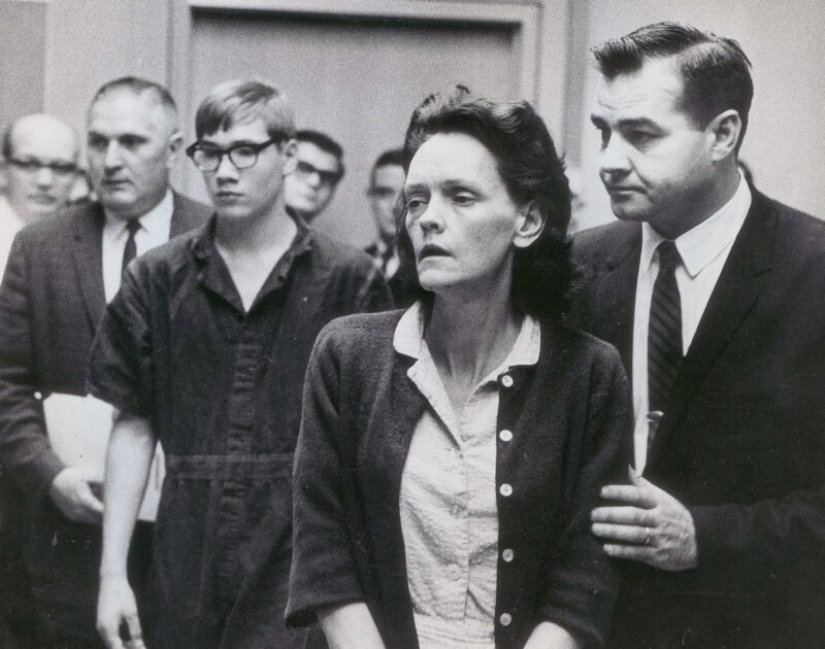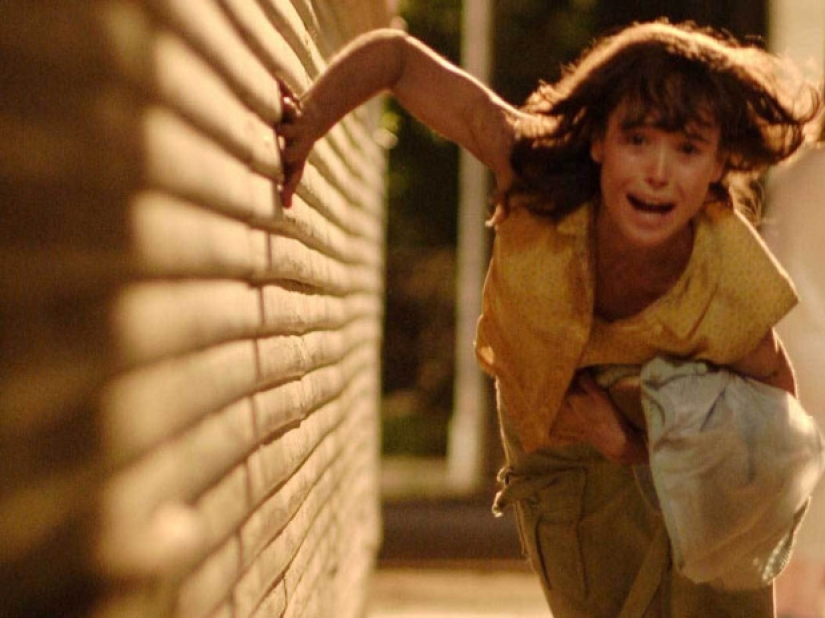The Murder of Sylvia Likens: The Story of America's Most Brutal Crime
Categories: History | Society | World
By Pictolic https://pictolic.com/article/the-murder-of-sylvia-likens-the-story-of-americas-most-brutal-crime.htmlThe case of Sylvia Likens is considered the worst case of child abuse in the United States, which still stirs the minds of caring Americans. We tell the tragic story of a 16-year-old girl who became a victim of distraught sadists and the total indifference of the people around her.

Crimes involving children are always particularly striking in their cruelty and unscrupulousness, but the case of Sylvia Likens has become one of the most terrible in the criminal history of America. Torture, physical and emotional abuse, brutal beatings — before her death, a 16-year-old girl went through a real hell.
However, this story scares not only with the images of monsters in whose house Sylvia turned out to be, but also with the total indifference shown by others who had every chance to save the victim of abuse and prevent murder.

Sylvia Likens
Sylvia Mary Likens was born on January 3, 1949 in Lebanon, Indiana. Her parents, Elizabeth and Lester Likens, were traveling entertainers and made a living performing in traveling circuses. Sylvia had four brothers and sisters, the youngest of whom, Jenny, had suffered from problems with the motor apparatus since childhood and was practically unable to move independently.
Others noted that Sylvia was a very kind and sympathetic child — since the parents of five children were often away, she took care of her brothers and sisters on herself. The girl helped them with their lessons, cooked food, and for her sister Jenny, Sylvia actually became a second mother, helping her in all life circumstances.
Unfortunately, even when Lester and Elizabeth was close to the children, their parental qualities were not at their best — the couple regularly arranged noisy scandals with breaking dishes and fights, and the money they earned while traveling was barely enough to live on.
In addition, Sylvia's parents often left their children in the care of distant relatives — during their lives, the offspring of the Likens changed about fourteen shelters. Of course, the conditions in these homes were far from ideal — the children constantly went hungry, wore rags and did not know what parental love and care were.
In 1965, Lester and Betty (as Elizabeth Likens was briefly called) went through another breakup — the father of the family decided to go to another state to work, and Sylvia's mother and her children stayed in their native Lebanon. However, when Lester returned home, he was surprised to find that the children were in the house of a woman named Gertrude Baniszewski, and Elizabeth was serving a sentence on charges of theft.
Realizing the fact that he would not be able to raise his children alone and earn money at the same time, Lester offered Gertrude a job as a nanny — for $ 20 a week, a completely strange woman had to look after Sylvia and Jenny's limited capabilities (the man was able to take the rest of the children with him).
By the way, the Banishevsky family was catastrophically poor — there were no basic amenities in their house, including a shower and toilet, and due to the fact that the couple did not even have a stove, their main diet consisted of sandwiches from stale bread and leftovers found in the trash.

Gertrude Baniszewski, 1965
Nevertheless, Lester, who saw the living conditions of the Baniszewski family, did not find them appalling and left his daughters in the care of Gertrude, asking her to treat them as strictly as possible, because, in his opinion, the girls' mother allowed them too much.
When Mr. Likens left the state, Sylvia and Jenny began to get used to the new realities of life. The first week in the Banishevsky house passed relatively calmly - despite the lack of minimal amenities and hunger, the girls still had the opportunity to live a normal life and even began to establish relationships with the rest of Gertrude's children (of whom she had seven).
Despite the fact that the funds were credited to Banishevski's account the next day, her behavior only began to worsen. After the first incident with the late payment of Gertrude's services, she became angry at the girls, accusing them of having to work for free.
Now the woman regularly beat Sylvia and Jenny with improvised means for the slightest offense — one day Banishevsky's daughter Paula complained to her mother that the girls ate too much food at a church dinner, for which Gertrude struck her wards about 30 blows with a wooden racket on the back.
After this incident, all Gertrude's attention focused on Sylvia — most likely, the woman, who suffered from prolonged depression, bouts of aggression and other mental problems, considered the good-natured 16-year-old girl a threat and even envied her, and therefore hated and snapped at her at every opportunity.

Richard Dean Hobbs, Gertrude's neighbor, who was directly involved in the torture of Sylvia
Once, after experiencing another attack of Banishevsky's aggression, Sylvia decided to distract her attention and gave her a secret that Gertrude's daughter Paula shared with the girl — as it turned out, she was pregnant, but she was afraid to reveal the truth to her domineering mother.
Unfortunately, the girl's attempt to switch the sadist's attention to her own children was unsuccessful — an angry woman accused Sylvia herself of a dissolute lifestyle (who knew practically nothing about the conception process, and therefore could not clearly respond to Gertrude's claims), and Paula, angry at the "betrayal" of Likens, brutally beat her, accusing her of revealing secrets.
The violence against Sylvia practically did not stop — returning from school, where the girl was hated and considered the main gossip, Likens encountered Gertrude, who did not give her food and water, insulted her, locked her in a room for several days and brutally beat her.

A shot from the movie "American Crime" (2007), based on the real events of this murder
It is noteworthy that many of Banishevsky's neighbors saw the nightmare that was going on in her house, but for some reason they simply ignored what was happening — for example, one day a girl named Judy Duke told her mother that Gertrude was beating Sylvia to a state of semi-death, to which she replied that in this way a woman punishes a guilty child.
Another woman, Phyllis Virmillion, also knew about the abuse of Sylvia Likens, who wanted to hire Gertrude as a nanny for her two children, but changed her mind after seeing the beaten girl in Banishevsky's house. Reportedly, Phyllis met with Sylvia at least twice, in each of which Paula, the eldest daughter of the hostess of the house, proudly reported that it was she who beat up Likens.
It is noteworthy that all the injustice and cruelty that Sylvia faced did not break her spirit — the 16-year-old girl continued to go to church, looking for rare moments of solitude to listen to her favorite compositions of The Beatles and other small pleasures, but, most importantly, she did not try to escape.
This was explained by the fact that the elder Lykens understood that her younger disabled sister Jenny would not be able to escape, and she could not leave her in the hands of sadists. Unfortunately, the realization that Sylvia would not be able to leave Jenny only untied Baniszewski's hands. Very soon Gertrude, along with the children, began to intimidate the younger Lykens, threatening her with reprisals if she did not participate in the beatings of her sister.
Jenny's broken psyche could not resist the pressure, and soon she began to participate in the harassment and physical punishments of her own sister. A few weeks later, Gertrude Banishevsky forbade the girl to go to school, beat her several times a day, put out cigarette butts on her body, forbade her to use the toilet, as a result of which Lykens developed a serious kidney disease.
Soon Baniszewski locked Sylvia in the basement, where she was in complete darkness for several months. The girl was forced to eat her own feces, and the frequent visits of Gertrude and her children turned into real torture sessions — at some point the sadists burned several offensive inscriptions on the victim's body, and then raped her.
Later, Gertrude came up with a new torture for her captive — for five cents, she allowed the neighborhood children to do whatever they wanted with Sylvia. So, they burned the tips of the girl's fingers, poured boiling water over her, forced her to sit in a very hot bath, rubbing salt into the wounds formed, after which they beat her and threw her into the basement.
After some time after such executions, Sylvia's body could not stand it — the girl began to lose her memory and spent most of her time in delirium, which angered Gertrude and her accomplices even more.
On October 26, 1965, Sylvia Likens died as a result of a brain hemorrhage. A few days before that, the girl lost the ability to move and talk independently due to a state of acute shock caused by torture and beatings.
It is noteworthy that Jenny, who was also questioned by the police, initially defended Gertrude, but before the police left, she whispered:
Soon, all the participants in the massacre of Sylvia were arrested - Gertrude, along with the children and two neighborhood boys, was placed in custody on the day of the discovery of the corpse, and other criminals (classmates of Likens, neighbors and others) were imprisoned three more days later.
Most of the participants in the trial were recognized as witnesses and released after several months of imprisonment — among them was the daughter of Gertrude Stephanie, who agreed to testify against her mother and her accomplices, as well as Anna Sisko, Judith Duke and Michael Monroe, who participated in several beatings and harassment.
As for the other defendants, on December 30 of the same year, Gertrude, John and Paul Baniszewski, as well as Richard Hobbs and Coy Hubbard, who was directly involved in the torture of Sylvia, was charged with first-degree murder.

Gertrude Baniszewski and Richard Hobbs in the courtroom
Despite attempts by lawyers to prove the innocence of the defendants, on May 19, all five participants in the murder were found guilty of the crime.
Gertrude Baniszewski was sentenced to death (which was later commuted to life imprisonment), her daughter Paula was also sentenced to life in prison in Indiana. John, Richard and Coy were found guilty by the court of second-degree murder and received sentences ranging from two to twenty years in prison.
It is noteworthy that Baniszewski herself insisted on her innocence during the trial, explaining her actions by mental abnormalities and the effect of asthma medications, and during the announcement of the verdict, the killer cried and called the name of Sylvia Likens. Paula, who gave birth to a daughter, while already in prison, named the child Gertrude in honor of her mother, explaining her act by saying that she considers the elder Banishevsky an example to follow.
The case, which thundered all over America, plunged the townsfolk into a real shock — the cruelty with which Banishevsky and her children tortured the unfortunate captive caused a wave of panic and indignation, but another thing surprised the public no less. During the investigation, a number of witnesses were identified who knew about what was happening in Gertrude's house.
So, several neighborhood children, the priest of the Baptist church Roy Julian, a nurse from Sylvia's school, adult neighbors of the woman and many others gave official testimony, according to which they were all aware of what was happening, but since Gertrude assured them of the expediency of punishments, they did not rush to help the girl.
Anyway, soon the resonant case began to be gradually forgotten, until in 1970 the Indiana court decided to resume the cases of Gertrude and The floors are repeated - as the representatives of the law explained, the women did not have the opportunity to fully exercise their right to protection, because too much hype was raised around the case.
Nevertheless, Gertrude managed to leave the walls of the prison, change her name and move to another state, where she died a few years later from lung cancer. Her daughter Paula, who also changed her name, settled in Iowa, where she still lives with her husband and two children — it is known that in 2012 the woman was dismissed from the position of assistant school psychologist after the management of the educational institution found out Paula's past.

A shot from the movie "American Crime" (2007), based on the real events of this murder
The rest of the participants in the events also found their place in life, and some of them publicly repented — for example, John Baniszewski repeatedly recalled Sylvia Likens and pleaded guilty to her death, and later he even helped teenagers who were painfully going through their parents' divorce (according to John, it was anger at the separation of his own parents that forced him to participate in crimes).
Despite the fact that more than fifty years have passed since Sylvia's death, the memory of this monstrous crime is still alive — several works of art have been dedicated to her story, including Jack Ketcham's book "The Girl Next Door" and the tape "American Crime" by Tommy O'Haver, and people still continue to come to the memorial on her grave, the engraved inscription on which reads:
Keywords: Girl | Cruelty | Crime | Murder
Post News ArticleRecent articles

According to the FBI, bank robberies by female robbers have increased in recent years. And what forces a woman to rob a bank? Law ...

The history of the Blanchard family happened back in 2015, but it is still being talked about. The brutal murder of Dee Dee ...
Related articles

The world community was shocked when in 2007 a dirty naked woman was found in the Cambodian jungle, who did not speak, could not ...

Deformities and physical abnormalities simultaneously frightened and attracted people at all times. The so-called "circus freaks" ...

Everyone knows that members of the Japanese mafia Yakuza clans — a harsh, ruthless men, capable of anything. And about women of ...

Wreaths of flowers are kept at the height of fashion for several years already. Girls wear them to weddings, holidays and ...